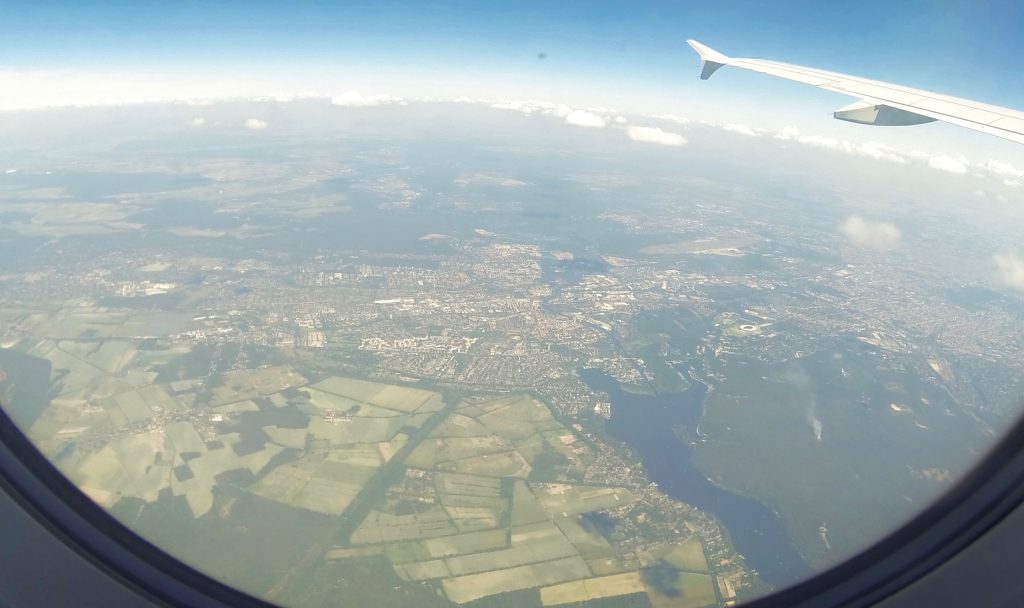
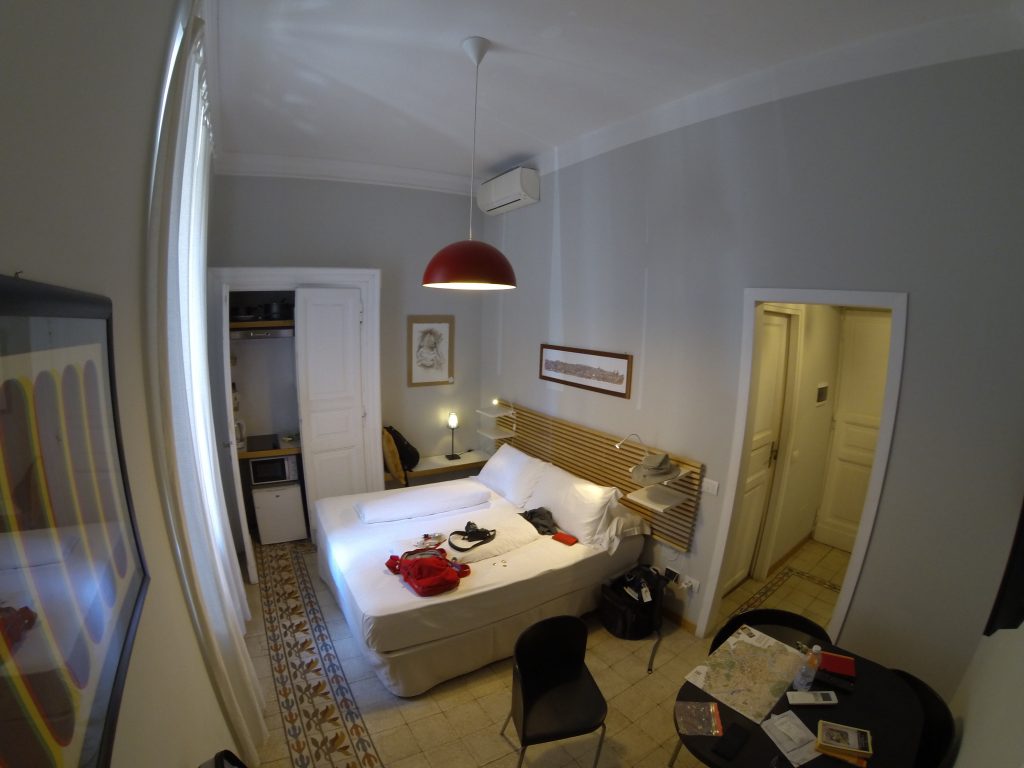
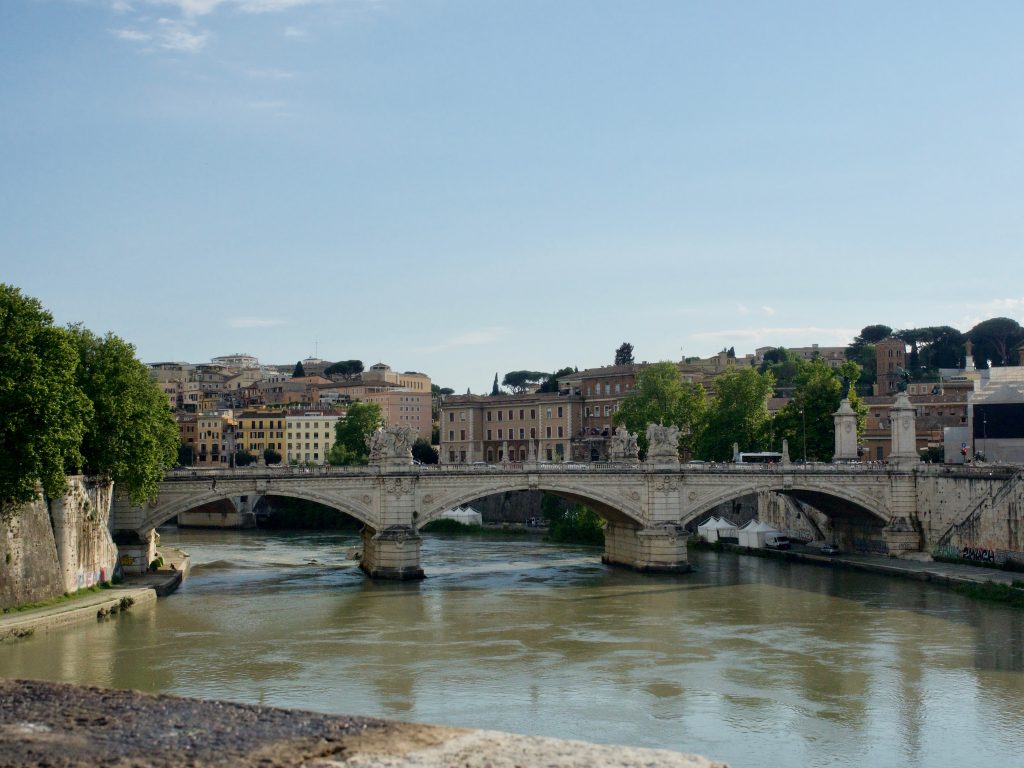
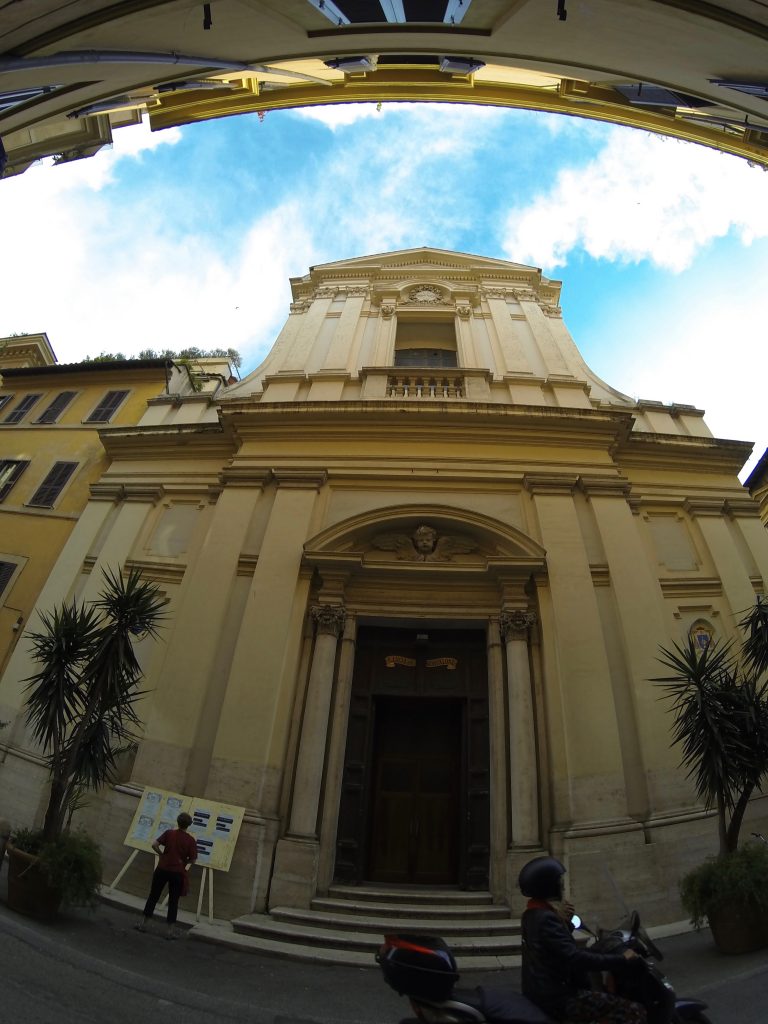
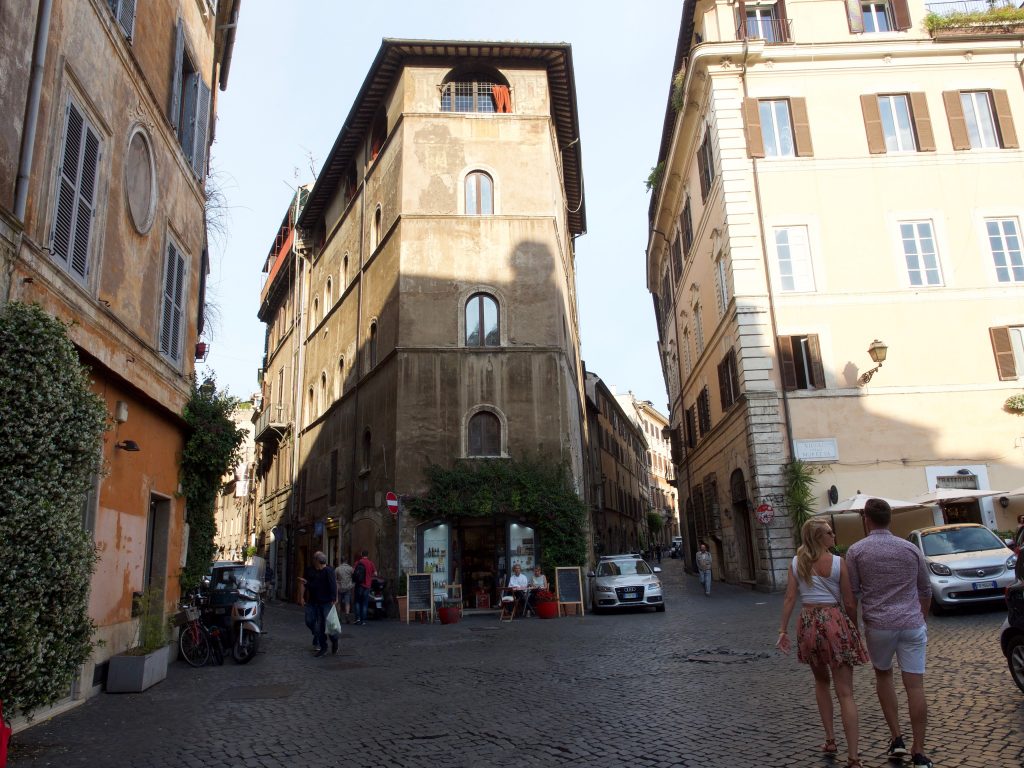
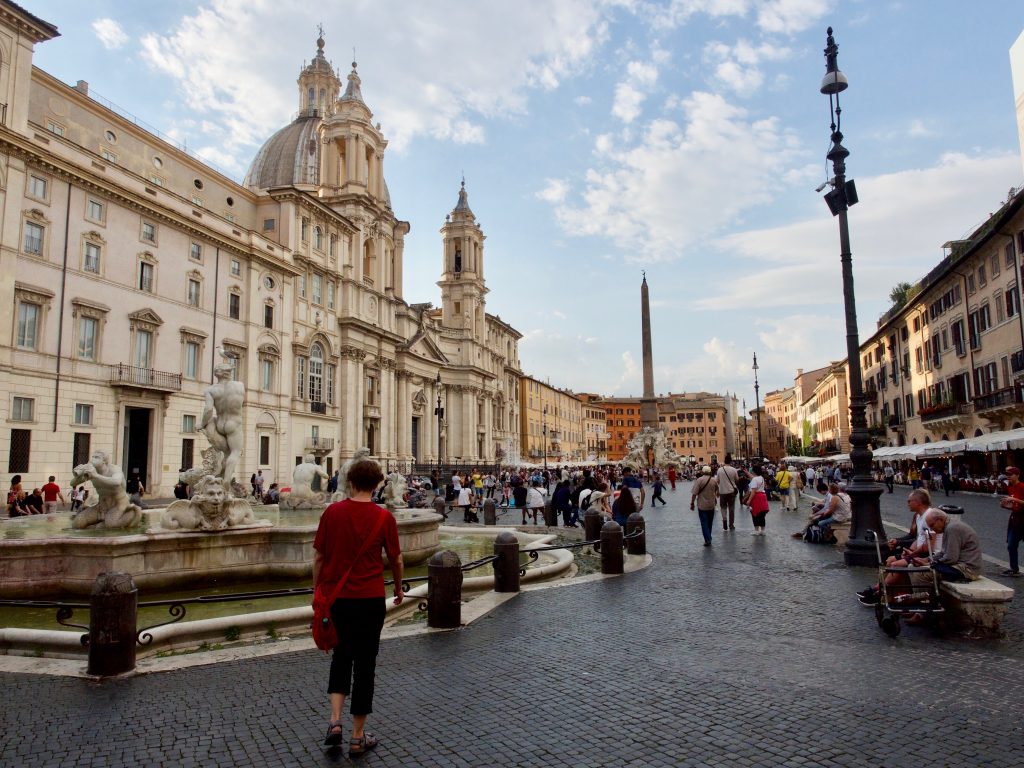
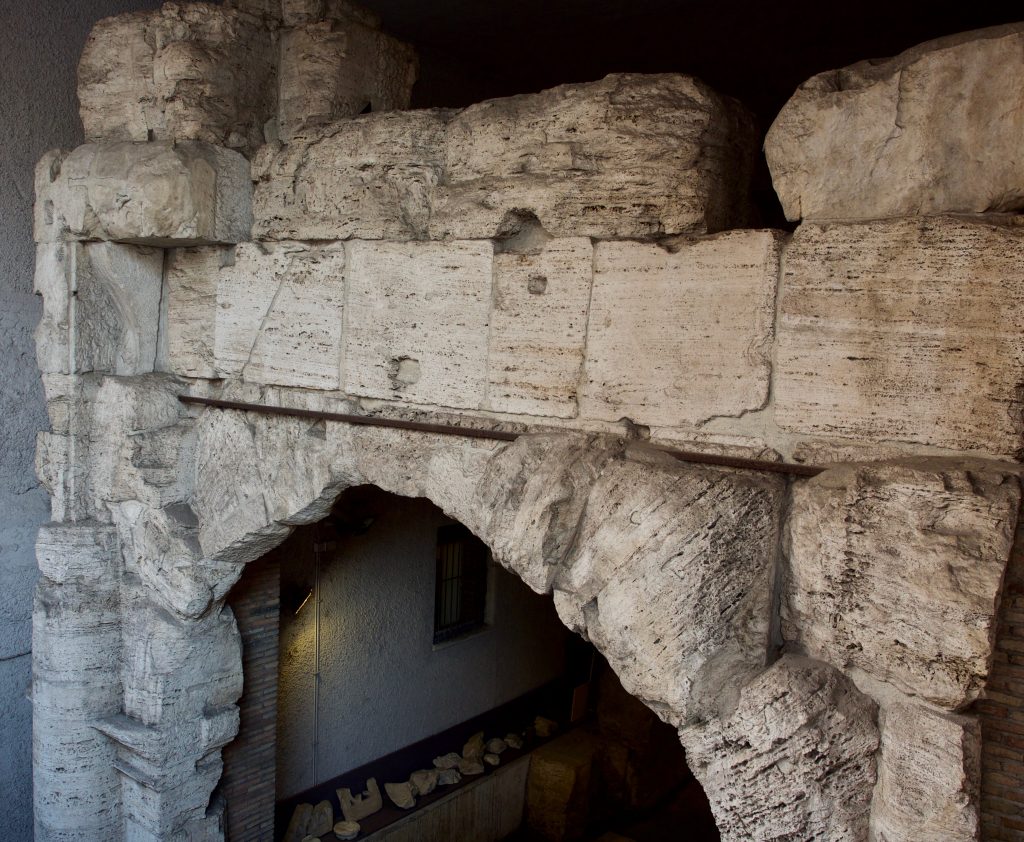
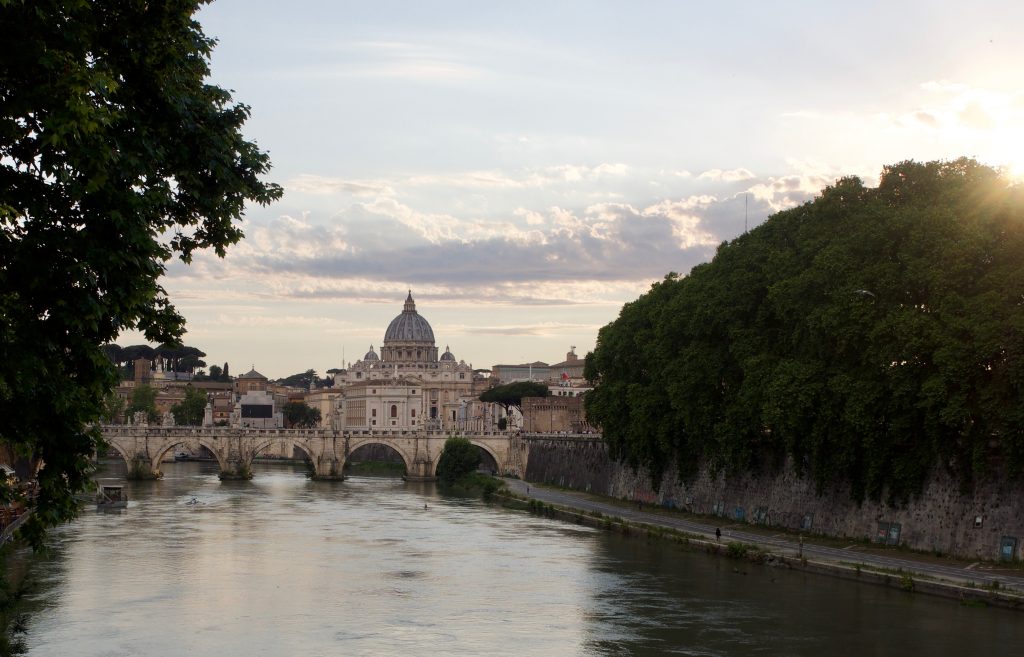
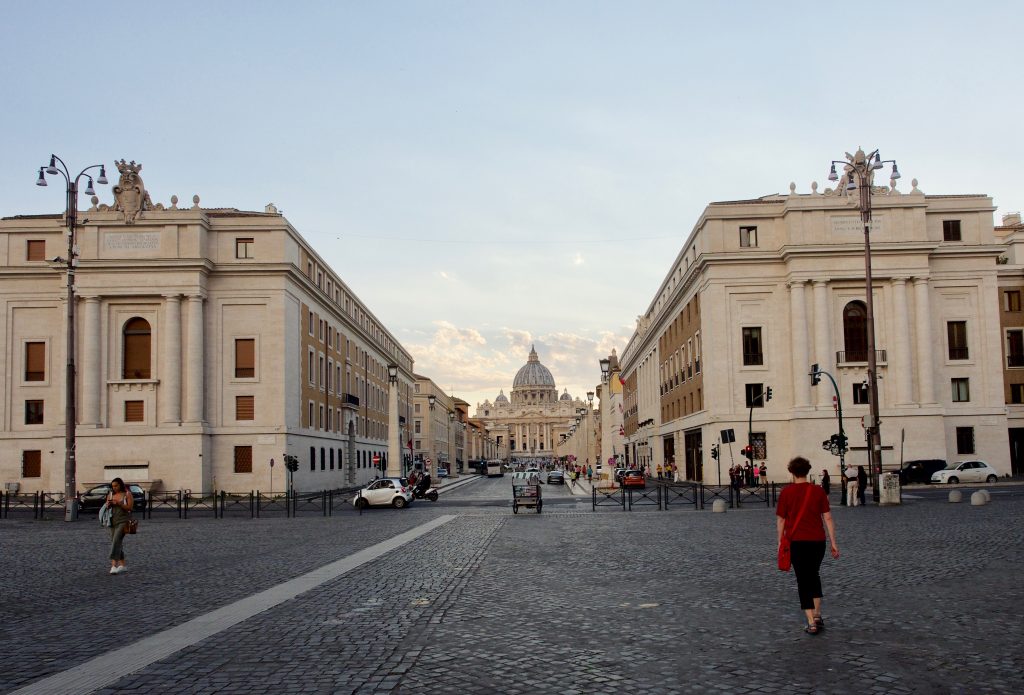
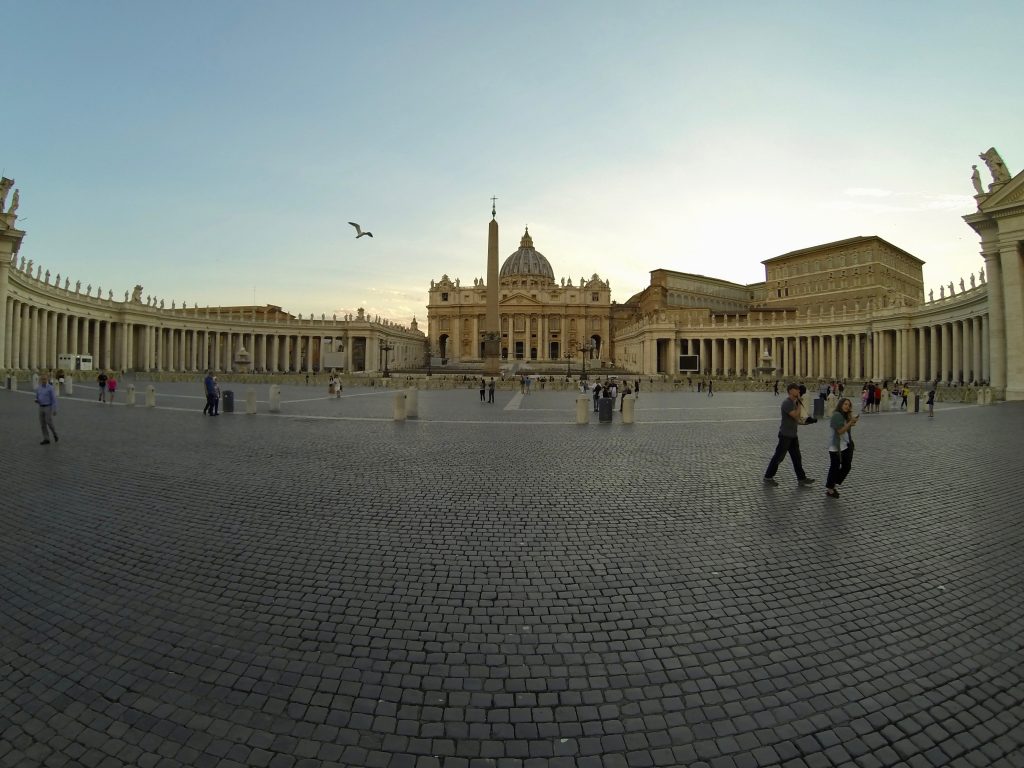
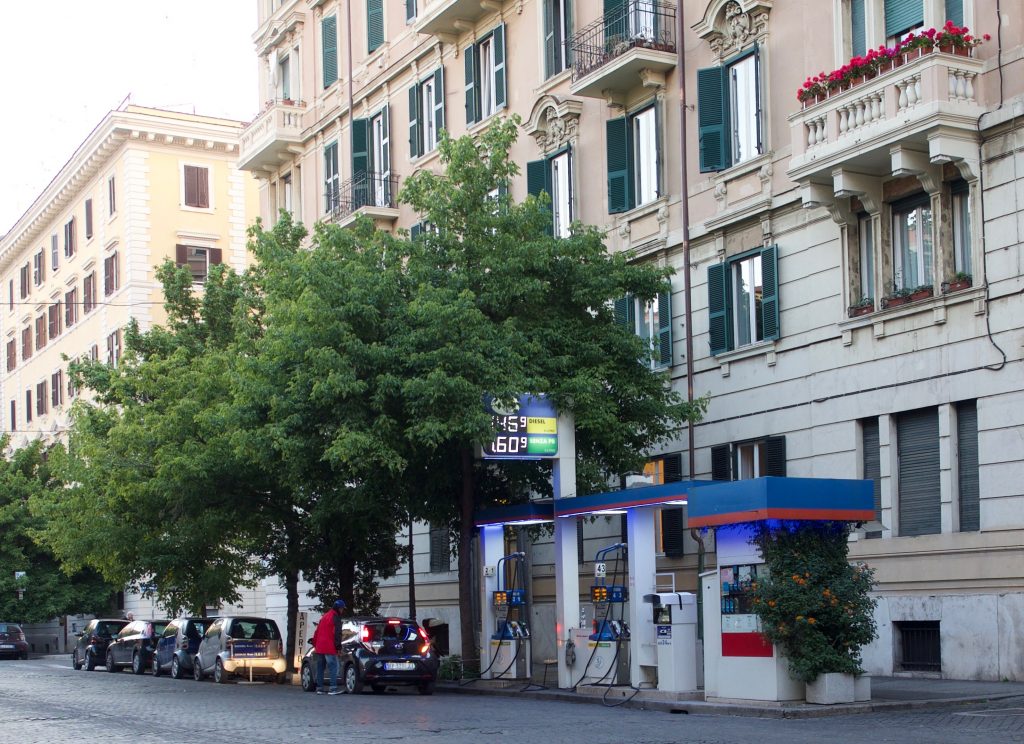
After a night with not as much sleep as I would have liked, we left an already quite-warm Berlin for a sunny but cooler Rome. The trip itself was uneventful—we had coffee and rolls at a little sidewalk cafe, then took the bus to the airport, which only takes 15 minutes, but we got pretty crowded on the way, and Tegel airport is crowded and full of long lines. There was a hold-up at the security check because the people in front of us had bought a dangerous-looking souvenir that alerted the x-ray machines: a long brass bullet casing with a small decorative knife in it. But we had come extra early and we made it to our gate on time. Rome’s airport was better organized and we found our shuttle bus without a problem. It was about an hour’s ride to the station near our guest house (and this time, “near” really meant 2 minutes), which is this completely charming set-up of many small rooms on the ground floor of a late-19th century apartment building in the residential area just north of the Vatican, which was built in the late 19th-/early 20th century and looks lovely to me with its yellows and beiges and its many roof gardens and balconies.
We have everything we need in our room, including a teeny efficiency kitchen built into the closet. Juan, the “receptionist” who was there to meet us (the whole thing about these guest houses is that they do not have someone on staff all the time, and you have to make arrangements for getting keys etc.) was very nice and gave us a good introduction to how to get place from here, including many warnings about how to not get ripped off and where to not eat because prices double for tourists. He recommended the neighborhood itself for small bites to eat etc., and so we set out to find a sidewalk place, but it was very early (5 pm) and most of the traffic was still just at the cafes. We settled on a place that served pasta but was really just a glorified fast-food stand. So the pasta was marginal, and we need to find a better way to combine eating cheap with making sure we still eat delicious and occasionally even healthy things. We then found a small supermarket (the equivalent of the little SPARs in France and England, here called PAM) and got some yogurt for the morning and some picnic food for later, took it back to our mini fridge, and went for an evening walk through some of the closest touristy parts of Rome.
All we had to do for that was to walk around the Castel Sant’Angelo, the huge pentagonal “fortress of the popes” which actually started out as a mausoleum for the Roman Emperor Hadrian and is now a small park with a museum in the middle, and cross the Sant’Angelo bridge (with the all-imposing view of St. Peter’s Basicila) into the downtown area. Rather than trying to find anything in particular, I just wanted Mark to get the feel of the many windy streets and little plazas that I had so much fun rambling through before, without trying to keep track of which church was where, what building was built when etc. Just to take things in. That was fun, and we ended up (with a little bit of in-between checking of the google map on our phone) on the Piazza Navona, which is really fun, touristy or not—spacious in the middle of all the narrow streets and teeny plazas, and with the seagulls not really caring that the fountain of the four rivers is a Bernini (I’m not sure the tourists really care either, certainly not by 7 pm when they are tired). There was street music and gelato and there were benches to sit on and people to watch, so we were happy. We took more windy streets to get back home and came out by the Palace of Justice, where the Italian Supreme Court meets, which I tagged (correctly) as a late 19th century attempt to build another neoclassical monster in the style of the Renaissance palaces. But obviously, given that most people don’t have immediate suspicions of fakery (or care), lots of people were milling around looking at the statues and medallions. I was intrigued to learn that its nickname is “the bad palace,” palazzacio, because of initial corruption and foundation issues when it was built.
We took another little detour through the Castel Sant’Angelo to St. Peter’s (taking a perfect linear perspective picture with me in it on the way there), where I gave Mark a mini lecture on the history of St. Peter’s and the colonnade “pincers” that surround the plaza and make it look so imposing. Then we walked back to our apartment, less than 10 minutes from Eastern Vatican walls, and called it a night. Great start to our time in Rome.